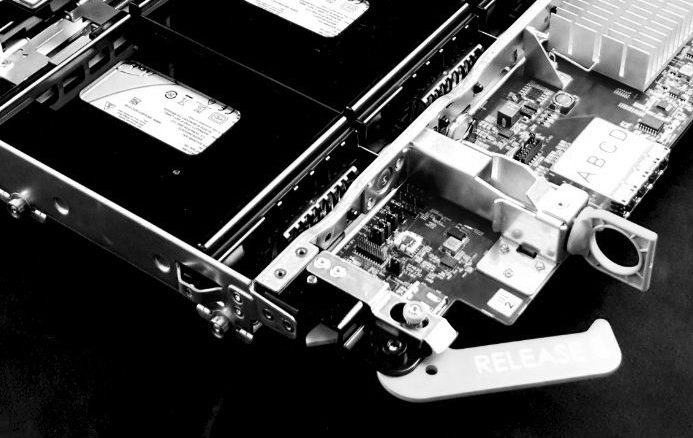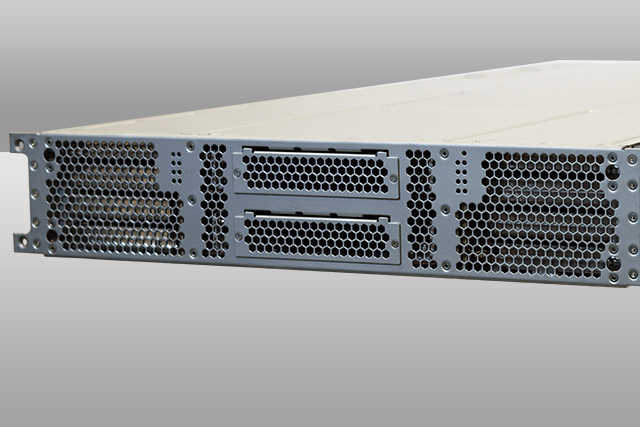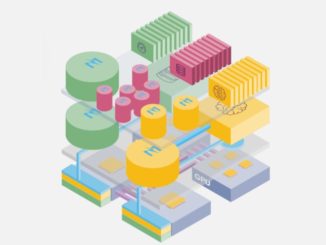
Newisys has been on the NVM-Express for several years, putting the high-profile interface in a growing number of server and storage platforms, including servers with NVM-Express directly attacked to the CPU, a system running NVM-Express over Fabrics (NVMe-oF) and a storage expansion flash array (JBOF, or Just a Bunch of Flash). In addition, the company’s executives have been on the road touting the technology, such as in a presentation at last fall’s SC17 show, where Rick Kumar, vice president of product development, touted numbers indicating that by 2020, more than half of all servers will ship with NVM-Express drives and more than 60 percent of storage server drives will be NVM-Express.
“NVM-Express is undergoing a massive change in the market,” Kumar said at the supercomputing event, adding that HPC organizations are quickly adopting the interface. “NVM-Express ultimately eliminates the unnecessary overhead of the SCSI stack and supporting a lot more queues at a higher bandwidth with significantly lower latency. That’s the main driver.”
Newisys – which years ago built servers armed with Opteron chips from AMD, and since 2003 has been owned by contract electronics manufacturer Sanmina-SCI – certainly isn’t the only tech vendor looking at NVM-Express.
A broad range of vendors, including systems makers such as Dell EMC, IBM, NetApp, Pure Storage and E8 Storage, component vendors like Intel and Cavium, and others expanding the NVM-Express capabilities in their product portfolios as demand for the technology grows. At the Dell Technologies World show earlier this year, NVM-Express was a key focus of Dell EMC’s datacenter efforts, not only continuing to push it into servers – including two PowerEdge systems introduced at the conference – and storage arrays, but also seeing it as a gateway to other up and coming technologies, such as NVMe-oF and storage class memory (SCM), all aimed at improving performance and driving down latency.
At a time when greater mobility, data analytics, the Internet of Things (IoT), edge computing and the cloud are driving greater demand for faster data collection, storing, processing and analysis, NVM-Express is a welcome protocol, offering faster throughput and lower latency for flash and other non-volatile memory.
“NVMe is growing fast and it is the next natural step,” Dan Liddle, vice president of marketing for Newisys, tells The Next Platform. “It doesn’t have other technologies that are competing that might sidestep it. We know it’s happening, but what you’re asking is, when will it be here in grand, full fashion, and that is the big question that everybody has. When NVMe first came out – and we’re still in the early stages of it – there were a whole bunch of capabilities and services that were missing. Those that had already been around for … SATA-based stuff, those things are making their way into the stacks for the NVMe piece, so there’s still some components that have to go for it to be broadly usable in all configurations, but the rate that we’re still seeing these capabilities being added is tremendous.”
Sales of systems with NVM-Express already are happening now, though it could be a couple of years before adoption takes off.
“We are seeing the adoption picking up,” Liddle says. “I’m thinking it will be two years before where people are just saying, ‘OK, I don’t need SAS or SATA, I’m heading over completely to NVMe.’ They’re doing it today for particular applications and into next year, and then it’s two years out when it really accelerates.”
When that happens, it will be important for companies like Newisys to have a full portfolio of products that support and offer NVM-Express capabilities, which is why the company continues to add to its lineup of systems and why it’s good to be part of a large ($7 billion) company like Sanmina SCI, he says. The new Newisys Division of Sanmina came out of stealth mode this month, even though the acquisition of Newisys is 15 years in the rearview mirror. The new unit is aimed at selling systems to the largest hyperscalers, enterprises and OEMs, and being part of a larger organization that has an international presence, manufacturing plants and resources will help as Newisys looks to compete in what is becoming a highly competitive market.
“This market is rapidly evolving right now,” Liddle says. “It’s developing, it’s moving quickly, and as a result of that, a roadmap matters. Offering a single point product with NVM-Express capabilities is not particularly helpful to the larger, hyperscale customers out there or large enterprises. They generally would like to support multiple applications and capabilities with systems, and having a vendor who understands all the different uses and how to develop top forms for those is very important.”
That includes not only a broad portfolio, but also one with systems that are interoperable with multiple components to reduce the risks of customers being tied to a single vendor for particular applications.
“Our systems support a wide range of NVMe drives from different manufacturers so that we can tune that particular platform for a specific application,” Liddle says. “For instance, if you’re looking for ultra-low latency, we can pull in the Intel Optane drives so you get the best possible latency. If you’re looking for maximum throughput, you can pull in the SSDs from Samsung. So supporting all these components – interfaces and CPUs and so forth – is very important.”
With that in mind – and now that Newisys is out of stealth mode as a division of Sanmina SCI – the company this month rolled out a new addition to the NVM-Express lineup and gave a glimpse of another one coming in the future. The company rolled out the NSS-2560, which comes with a 2U enclosure that holds two storage server modules that are powered by dual socket Intel Xeon processors – “Broadwell” Xeon E5 chips at first, which will be followed quickly by the current “Skylake” Xeon SP processors. The system is designed to fit 56 2.5-inch NVM-Express drives that are loaded through a side panel, and each server – which has up to eight DIMMs per CPU – has access to all 56 drives. The side-panel design “allows us to fit far more flash drives in a 2U form factor than anyone else can,” he says. “It also allows us to do it in a way that have very few minimal moving mechanical parts that can fail. The whole system slides out and you can remove the drives without taking anything off-line. The drives are hot-swappable.”
The system delivers 50 GB/sec of throughput over four 100 Gb/sec Ethernet ports and 12.5 million IOPS (reads), along with 64 GB/sec of bandwidth between the servers.
The company also hinted at an upcoming NVM-Express SSD carrier system, but declined to give details about it. Liddle also says the new NSS-2560 bolsters a lineup that already includes systems that have one to four server modules and eight to 24 NVM-Express drives, an external JBOF box that directly connects into servers, and the NVMe-oF offering with 24 NVM-Express drives and a mesh fabric that can attach other NVM-Express devices over 100 Gb/sec Ethernet.
“Getting product out there and iterating has proven to be a much more effective way to go to market because you learn in real time first-hand,” Liddle says. “If you save it and come out with one big thing later, you can be wrong about it. We see it being a very big advantage to being first to market. That’s why we make a very big investment early on in the development in these next-generational systems.”






Be the first to comment